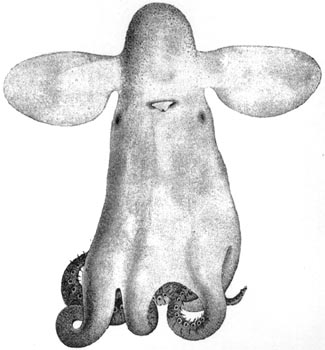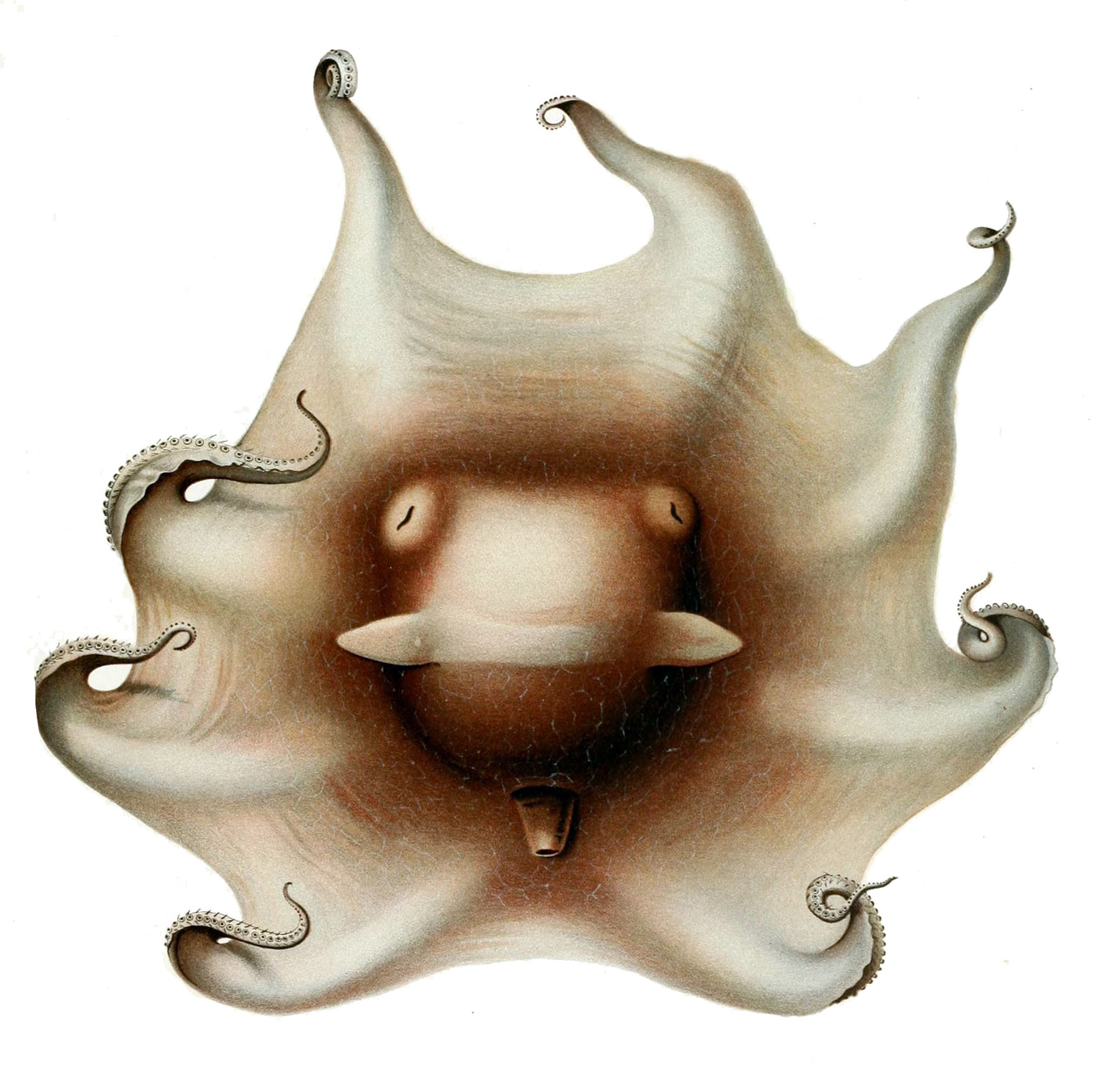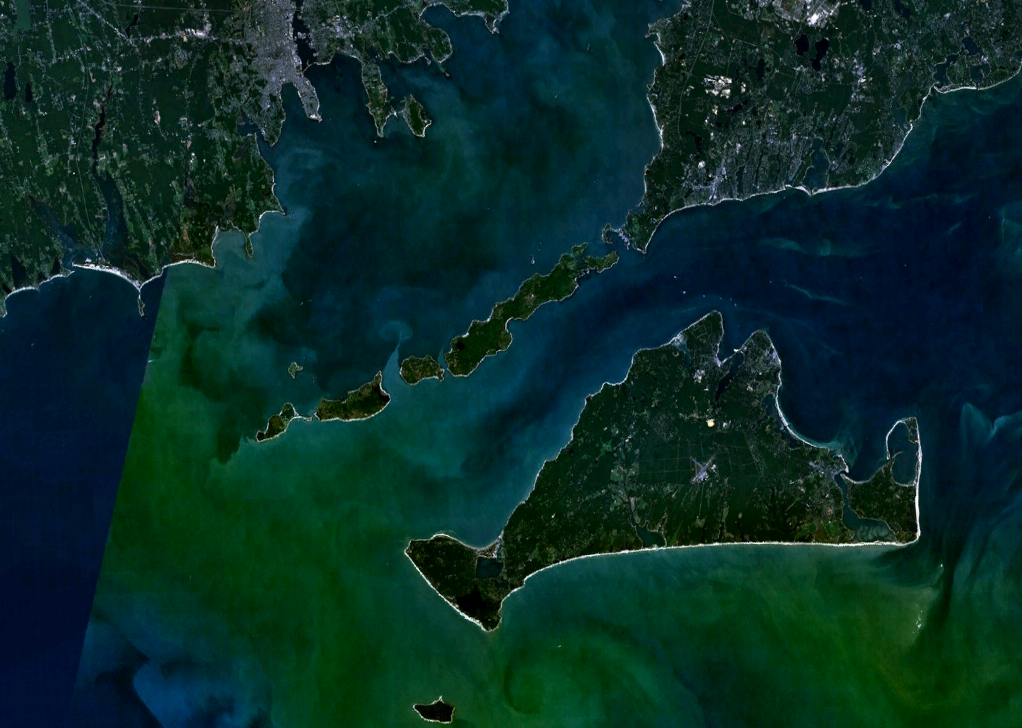|
Grimpoteuthis Megaptera
''Grimpoteuthis megaptera'' is a species of umbrella octopus known from five specimens, collected by Addison Emery Verrill. Between two and three of these specimens may belong to different species. Description and habitat ''G. megaptera'' lives in the Atlantic Ocean off of Martha's Vineyard Martha's Vineyard, often simply called the Vineyard, is an island in the Northeastern United States, located south of Cape Cod in Dukes County, Massachusetts, known for being a popular, affluent summer colony. Martha's Vineyard includes the s ... in the United States. It was found 4,600 meters deep. Its full length reaches 107 millimeters. Its eyes are small, as are its suckers and cirri. The octopus' arms and web, when viewed orally, are brown. ''G. megaptera'' has yellow suckers and a blue-white mantle and fins. The mantle is spotted with irregular brown-purple markings. References {{Taxonbar, from=Q1895085 Octopuses Molluscs of the Atlantic Ocean Molluscs described in 188 ... [...More Info...] [...Related Items...] OR: [Wikipedia] [Google] [Baidu] |
Umbrella Octopus
Umbrella octopuses (family (biology), family Opisthoteuthidae) are a group of pelagic octopuses. Umbrella octopuses are characterized by a web of skin between the tentacles, causing them to somewhat resemble an opened umbrella when the tentacles are spread. Description Opisthoteuthidae are a group of octopuses characterized by a web of skin in between their tentacles. They have a U or W shaped shell that holds the mantle and connects to their tentacles at the bottom. This structure makes the umbrella octopus resemble an umbrella when they spread their tentacles/web out. The structure of the umbrella octopus has the oral surface below the mantle of the octopuses and the web with their tentacles surround the bottom of the mantle. Their outer skin has a very delicate consistency that results in white spots appearing on their skin when damaged. Opisthoteuthidae fall into the cirrate octopod group, meaning they have fins. Although opisthoteuthidae are categorized as cirrates, unlik ... [...More Info...] [...Related Items...] OR: [Wikipedia] [Google] [Baidu] |
Addison Emery Verrill
Addison Emery Verrill (February 9, 1839 – December 10, 1926) was an American invertebrate zoologist, museum curator and university professor. Life Verrill was born on February 9, 1839 in Greenwood, Maine, the son of George Washington Verrill and Lucy (Hillborn) Verrill. As a boy he showed an early interest in natural history, building collections of rocks and minerals, plants, shells, insects and other animals. When he moved with his family to Norway, Maine at age fourteen he attended secondary school at the Norway Liberal Institute. Verrill started college in 1859 at Harvard University and studied under Louis Agassiz. He graduated in 1862 with a B.A. He went on scientific collecting trips with Alpheus Hyatt and Nathaniel Shaler in the summer of 1860 to Trenton Point, Maine and Mount Desert Island and in the summer of 1861 to Anticosti Island and Labrador. In 1864 Verrill made reports on mining, or prospective mining, properties in New Hampshire, New York, and Pennsylvania. Tw ... [...More Info...] [...Related Items...] OR: [Wikipedia] [Google] [Baidu] |
Martha's Vineyard
Martha's Vineyard, often simply called the Vineyard, is an island in the Northeastern United States, located south of Cape Cod in Dukes County, Massachusetts, known for being a popular, affluent summer colony. Martha's Vineyard includes the smaller adjacent Chappaquiddick Island, which is usually connected to the Vineyard. The two islands have sometimes been separated by storms and hurricanes, which last occurred from 2007 to 2015. It is the 58th largest island in the U.S., with a land area of about , and the third-largest on the East Coast, after Long Island and Mount Desert Island. Martha's Vineyard constitutes the bulk of Dukes County, which also includes the Elizabeth Islands and the island of Nomans Land (Massachusetts), Nomans Land. The Vineyard was home to one of the earliest known deaf communities in the United States; consequently, a sign language, the Martha's Vineyard Sign Language, emerged on the island among both deaf and hearing islanders. The 2010 census report ... [...More Info...] [...Related Items...] OR: [Wikipedia] [Google] [Baidu] |
Octopuses
An octopus ( : octopuses or octopodes, see below for variants) is a soft-bodied, eight- limbed mollusc of the order Octopoda (, ). The order consists of some 300 species and is grouped within the class Cephalopoda with squids, cuttlefish, and nautiloids. Like other cephalopods, an octopus is bilaterally symmetric with two eyes and a beaked mouth at the center point of the eight limbs. The soft body can radically alter its shape, enabling octopuses to squeeze through small gaps. They trail their eight appendages behind them as they swim. The siphon is used both for respiration and for locomotion, by expelling a jet of water. Octopuses have a complex nervous system and excellent sight, and are among the most intelligent and behaviourally diverse of all invertebrates. Octopuses inhabit various regions of the ocean, including coral reefs, pelagic waters, and the seabed; some live in the intertidal zone and others at abyssal depths. Most species grow quickly, mature early, a ... [...More Info...] [...Related Items...] OR: [Wikipedia] [Google] [Baidu] |
Molluscs Of The Atlantic Ocean
Mollusca is the second-largest phylum of invertebrate animals after the Arthropoda, the members of which are known as molluscs or mollusks (). Around 85,000 extant species of molluscs are recognized. The number of fossil species is estimated between 60,000 and 100,000 additional species. The proportion of undescribed species is very high. Many taxa remain poorly studied. Molluscs are the largest marine phylum, comprising about 23% of all the named marine organisms. Numerous molluscs also live in freshwater and terrestrial habitats. They are highly diverse, not just in size and anatomical structure, but also in behaviour and habitat. The phylum is typically divided into 7 or 8 taxonomic classes, of which two are entirely extinct. Cephalopod molluscs, such as squid, cuttlefish, and octopuses, are among the most neurologically advanced of all invertebrates—and either the giant squid or the colossal squid is the largest known invertebrate species. The gastropods (s ... [...More Info...] [...Related Items...] OR: [Wikipedia] [Google] [Baidu] |



